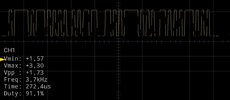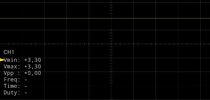There are literally hundreds, if not thousands, of different mass-produced Bluetooth modules.
Digikey alone list over 700 lines.
Many that are sold as pinned modules with supposedly the same type number (like HC-05, HC-06 etc.) have totally different surface mount sub-modules.
I bought about ten different types last year, tying to get some specific surface mount modules.
They were all advertised as the real thing and with photos of the genuine Wavesen sub-module - and they were all different fakes with different pinouts to the real one.
...and what do you think? what i'm trying to do will it work or not?
after ChrisP58 reply i think i'm looking at a UART communication having
current limiting resistors in series so it needs one of these little PCBs
HM or JDY type, wired to the corresponding pins.


